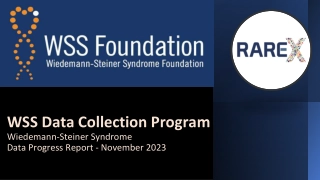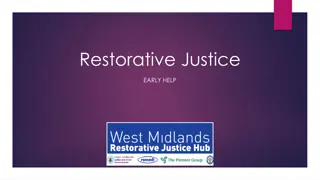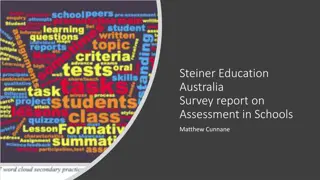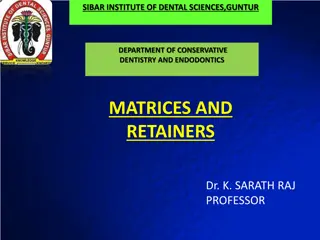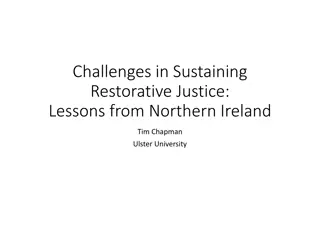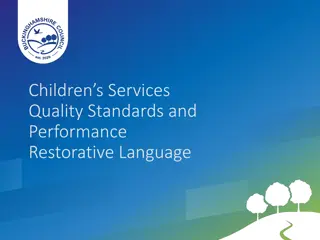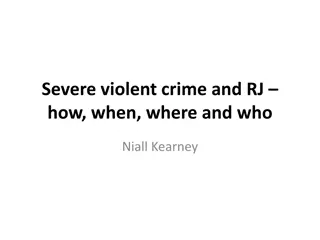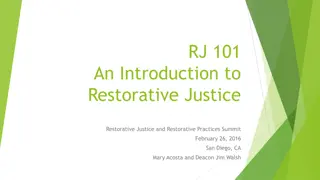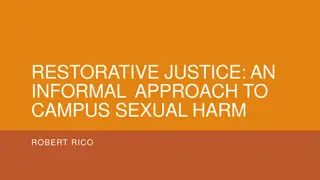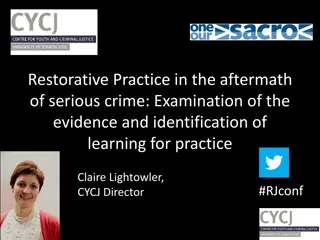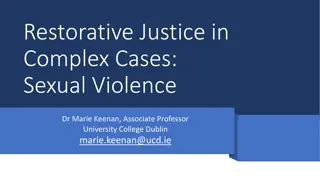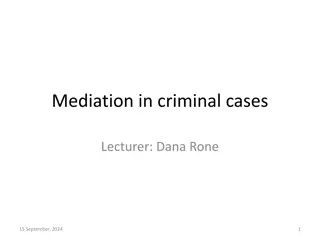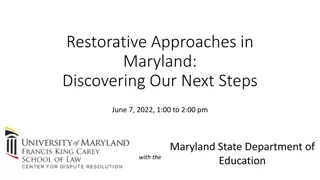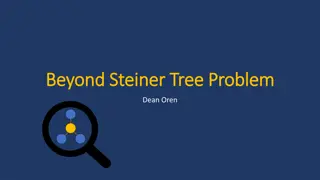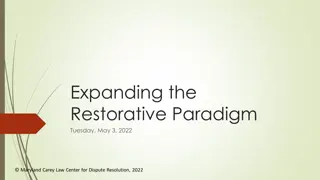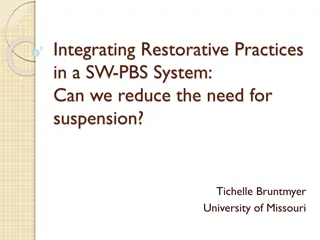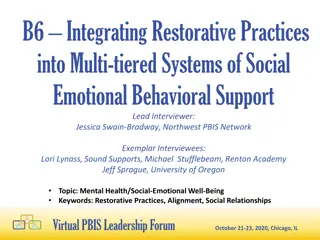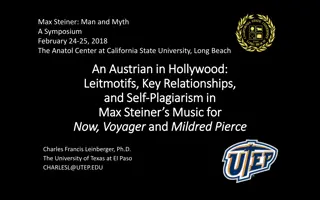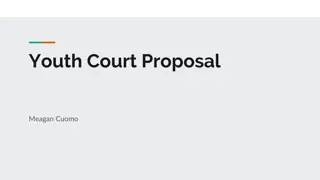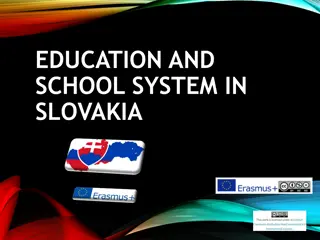Restorative Practice in Steiner Schools
Steiner Education focuses on nurturing students' holistic development to become compassionate, innovative, and self-directed individuals. Chronic stress can have detrimental effects on physiological and emotional well-being, especially related to heart health. Implementing restorative practices can enhance social resilience and help individuals better navigate challenging situations. The connection between the autonomic nervous system and heart function illustrates the importance of managing stress for overall well-being.
Download Presentation

Please find below an Image/Link to download the presentation.
The content on the website is provided AS IS for your information and personal use only. It may not be sold, licensed, or shared on other websites without obtaining consent from the author. Download presentation by click this link. If you encounter any issues during the download, it is possible that the publisher has removed the file from their server.
E N D
Presentation Transcript
Restorative Practice in Steiner Schools Dr Shelley Davidow School of Education University of the Sunshine Coast
What is the purpose of Steiner Education? Steiner education offers an approach that aims to support healthy physiological, emotional and cognitive development and its purpose is essentially humanist; the capacities that are supported in students in Steiner schools are life-worthy and future-proof , regardless of how the technological, political and economic realities of our future evolve. Over the course of the twelve-year Steiner school curriculum, students are supported to develop empathy and ethical awareness, maturity, insight, creativity and innovation and critical thinking. The aim of Waldorf Steiner schools worldwide is to enable students to become astute, free-thinking, innovative, self-directed and compassionate human beings who work out of their own passion for the good of humanity. (This is the infinite game the objective of which is to keep the game in play) see Carse, 1976). S.Davidow
A bit about stress: It disrupts healthy physiological, emotional and cognitive function.
The Autonomic nervous system (ANS) is comprised of: THE SYMPATHETIC NERVOUS SYSTEM. (The accelerator) speeds up activity. THE PARASYMPATHETIC NERVOUS SYSTEM. (The brakes) slows things down. Both of these branches connect to the heart. Any change in either of these affects the way the heart works on a beat-to-beat basis; specifically, any emotions change the activity which then impacts the rest of the body.
Chronic stress is directly linked to heart disease (and is a precursor to many others). The stress-response is learned early and written into neural circuitry.
Restorative practice builds social resilience. It offers us the opportunity to prepare for, recover from and transform our responses to challenging or difficult events/behaviours within communities. High Coherence is an optimal physiological state characterized by balance and harmony between all interacting systems
What happens in the heart has a significant influence on brain function: low coherence: the thalamus can t distribute information to the brain centres e.g. test-taking anxiety or being in trouble : we are cortically inhibited but when we get coherent, it brings the thalamus online and it can then distribute all the incoming sensory information. When we are in a state of fight or flight we can t self-regulate.
The Heart s Electromagnetic Field The heart s magnetic field, which is the strongest rhythmic field produced by the human body, not only envelops every cell of the body, but also extends out in all directions into the space around us. The heart s magnetic field can be measured several feet away from the body by sensitive magnetometers. Research conducted at IHM suggest the heart s field is an important carrier of information.
Baseline shift The amygdala becomes familiar with the patterns of emotions. Our brains strive to maintain what is familiar whether it s good for us or not. This is how we default into emotions or attitudes. Getting coherent often enough and for long enough allows the establishment of a new baseline. Steiner said: At school we must do everything we can to awaken love (1996). Feeling love/gratitude sets off a cascade of physiologically renewing effects as opposed to fear which results in depleting effects. Read this article made available by HeartMath.com https://www.heartmath.com/science/
Steiner Education is about the slow healthy maturation of the nervous system (Callegaro, 2001). So, RP offers a paradigm that supports our ethos of educating in equal measure, thinking, feeling and will and of putting heart, and our relationships at the heart of the matter.
Sustainable School Environments Environments are made up of the people in them how we act National survey (SEA 2018) We are about to embark on 2-year pilot study partnering with interested Steiner schools, the University of the Sunshine Coast and Restorative Practices Australia as well as SEA There is the potential to be involved down the track watch this space
The Restorative Approach The wrong thing is that which causes harm. This creates responsibilities and liabilities. Everyone who is part of the problem is also part of the solution.
From informal to formal Circles: to prevent issues from arising and build trust. Circles can take place once a week/fortnightly and involve games, sharing, checking in and cultivating healthy relationships. The restorative chat: for minor issues in the classroom and on the playground involving 2 or 3 students. The classroom conference: for issues involving whole classes where behaviour has become disrespectful and unmanageable. The restorative conference: for issues that are serious. This formal conference involves the people responsible for the harm, those harmed, parents of both parties, teachers and other affected parties. Needs trained facilitator.
Punishment and serving someone right or, a three-fold restorative approach Punitive: (elicits fight or flight/fear) What crime has been committed? Who is to blame? What punishment is needed? Restorative: (elicits empathy/compassion) What happened? What harm has resulted? What is needed to repair the harm/ make things right?
Restorative Approach (low stress) We find out what harm has been done (cognition) We ask how people have been affected (emotion) We come up with a solution for repairing the harm (follow- though) Thinking, feeling, will Our Objectives: The effects of behaviour are acknowledged Those responsible are accountable for their behaviour Those responsible for creating the problem are engaged in the solution
You can only have the chat when: Both/all parties are willing Everyone has calmed down
Narcissism or Altruism The punitive approach creates narcissism.(Students focus on avoiding punishment). The restorative approach creates altruism. (Students focus on repairing harm).
Restorative Practice is premised on the acknowledgement of harm teaches students to take responsibility for their behaviour. holds people accountable not a substitute for punishment or consequences includes consequences or punishment as part of the process not for every situation not possible if tempers are too hot or emotions are running too high. Set a later time to address the issue. not an option if the parties are unwilling to acknowledge responsibility
(Life-changing)Social Discipline Window HIGH TO WITH punitive relational authoritarian stigmatising authoritative respectful FIRM Expectations Rules Limits Pressure NOT neglectful indifferent passive FOR permissive protective easy/undemanding HIGH LOW Support - Encouragement - Nurturing With thanks to a presentation by Margaret Thorsborne adapted from Social Discipline Window - Paul McCold and Ted Wachtel - 2000
Shifting the dynamics of relationships Restorative Practice offers people the opportunity for social renewal. It can provide a form or lens that in line with Steiner s developmental paradigm, offers the chance to create transformative learning/teaching environments
Restorative Practice: relevance for Steiner schools
RP and Steiner Education RP is a three fold approach that involves Thinking, Feeling, Will Steiner said: The inner bond between pupil and teacher during classroom time is the crux of the matter (Steiner, 1996). Restorative approach: relationships are at the heart of the matter; they are the currency i.e., I do this because I want to maintain/regain our relationship of regard and respect. RP is not a program it s a lens, a disposition and pedagogical approach that is in harmony with Steiner s educational indications of developing a sense of responsibility, ethical awareness and empathy in our school communities. A restorative approach is not possible if people do not feel aligned with the values - i.e., we believe it is our responsibility to engage in addressing harms when and as they happen, acknowledging the impact and then acting to repair them.
Finding the right form a few words from Steiner The healthy social life is found When in the mirror of each human soul The whole community is shaped And when in the community Lives the strength of each human soul No one need try to discover a solution of the social question that shall hold good for all time, but simply to find the right form for his social thoughts and actions in the light of the immediate need of the time in which he lives (Steiner, 2006).
To the person responsible: (Primary - adult) What happened? What were you thinking at the time? What do you think about it now? (Thinking) Who do you think has been affected by your actions? How have they been affected? (Feeling) What can you do to make things right? (Will) To the affected person: What happened? What did you think when it happened? (Thinking) What has been the hardest thing for you? (Feeling) What do you need to happen in order to make things right? (Will)
Young Children a restorative approach Stress = Fear = sympathetic nervous system activity = inhibited cognitive function. Young children are savvy and learn how to lie at around age three. Watch this video. A restorative approach would eliminate the need for lying as we shift from focusing on the little person to focusing on the impact of what s happened What s happened, who s been affected and how do we fix this. https://theconversation.com/why-do-kids-lie-and-is-it-normal-98948
Re-draft for a Waldorf/Steiner context What happened? What did you want to happen? When you wiped paint on Marika s jersey, was she happy or sad? To make this better, can you go and get the cloth and wet it so you can help clean the paint off her jersey? In our classroom we don t mess other people s things and stuff. What is the best way to make sure this doesn t happen again? I ll talk to you both later to see that everything went as we meant it to go. What should we do if this happens again?
Early Years Early Years Your focus is on What happened? Who is hurt? How do we fix this? (Teacher guided and modeled)
Primary Scenario 1 Jack has thrown Lisa s pencil case into the bushes as a prank. It has everything in it, including the key to her home and her locker key. (Case study: When Lisa came to me, she was in tears. I asked her if she would like to have a restorative chat with Jack and she agreed. I found Jack, and told him Lisa agreed to resolve this restoratively if he wished to do so. He agreed to come and talk about what just happened. Note: If students do not want to talk right at the moment I have, for example, offered them an opportunity at the end of the day (no later). If they do not agree, I have and would explain that in that case I will have to make the best decision I can as to what will happen, based on available info, and this might not feel like the best or fairest, but I will make that decision none-the-less.
The success of the approach depends on follow- through and consistency Once a student has broken an agreement made in a formal conference, this is a behaviour choice and there is not another opportunity to make another agreement. The behaviour management plan of the school then comes into effect. Whatever punitive measures would normally be taken are taken. i.e. suspension/expulsion. The opportunity to make things right, therefore is not a substitute for punishment. It is an opportunity to repair harm. https://www.ted.com/talks/dan_reisel_the_neuroscience_of_restora tive_justice?language=en
If a school takes on a Restorative Practice approach: - it works best when it is in place at all levels. - everyone is clear that RP is not a replacement for punishment; it is pedagogy: an opportunity for repair. If formal agreements are broken, there is a firm line. No revolving door. The principal or head of school draws that line, which may involve suspension or expulsion. Teachers and wellbeing staff manage classroom behaviour (chats, circles). By the time an issue gets to the principal either a formal conference can be offered, or punitive measures come into effect depending on the circumstances. RP relies on willingness to engage and take responsibility. Without that, it doesn t work.
What schools have seen over time working with RP An overall reduction in behaviour issues Increased respect between students and between staff and students Improved well-being for all concerned Improved academic outcomes
References: All images used courtesy of the Institute of HeartMath, California https://www.heartmath.org Callegaro, B. (2003). Personal communication Carse, J. (2011). Finite and infinite games. Simon and Schuster. Evans, K., & Vaandering, D. (2016). The little book of restorative justice in education: Fostering responsibility, healing, and hope in schools. Simon and Schuster. IE, A. (2009). SCHOOLS IMPLEMENTING RESTORATIVE PRACTICES. Kinchin, I., & Doran, C. M. (2018). The cost of youth suicide in Australia. International journal of environmental research and public health, 15(4), 672. Langley, J. (2010). Early Years Restorative Practices Visual Script. Inyahead Press. McCold, P., & Wachtel, T. (2002). Restorative justice theory validation. Restorative justice: Theoretical foundations, 110-142. Murder Rate of Death Penalty States Compared to Non-Death Penalty States. (2021). Retrieved 23 February 2021, from https://deathpenaltyinfo.org/facts-and-research/murder-rates/murder-rate-of-death-penalty-states-compared-to-non-death-penalty- states Steiner, R. (2006). Anthroposophy and the social question. Kessinger Publishing. Steiner, R. (1996). The child's changing consciousness: As the basis of pedagogical practice (Vol. 16). SteinerBooks.


